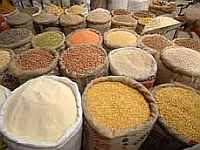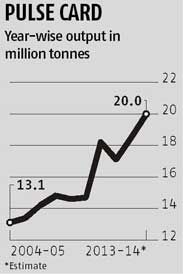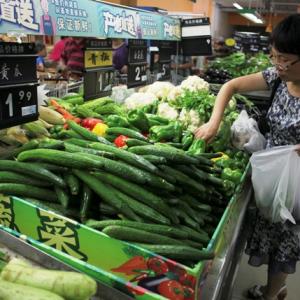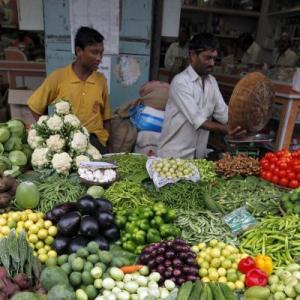 Amid expectations of a record rabi crop due to good monsoon rains, adequate soil moisture and a rise in the groundwater table, India is set to record self-sufficiency in pulses this year.
Amid expectations of a record rabi crop due to good monsoon rains, adequate soil moisture and a rise in the groundwater table, India is set to record self-sufficiency in pulses this year.
The first advance estimate of the ministry of agriculture for 2013-14 pegged kharif production at 6.01 million tonnes, a two per cent increase compared with 5.91 mt the previous year.
The India Pulses and Grains Association (IPGA) estimates production of kharif pulses at seven mt this year.
"We estimate rabi pulses output to rise five-10 per cent.
"This year, agro climatic conditions have been very supportive, especially in major producing states such as Rajasthan," said Bimal Kothari, vice-chairman of IPGA.
"We are expecting exceptionally good rabi production of both pulses and oilseeds this year due to favourable climatic conditions.
"A good monsoon, followed by intermittent extended season rainfalls, turned the climate in favour of pulses. India is moving gradually ahead to become self-sufficient in terms of pulses this year.
"However, the actual output would determine trade," said Ashok Gulati, chairman of the Commission for Agriculture Costs and Prices, which decides the minimum support price for agriculture commodities.
The rabi season accounts for about 70 per cent of India's pulses production.
Against an estimated overall production of 18.45 mt in 2012-13, India's annual pulses consumption stands at 20
 A substantial rise in the MSP for pulses helped farmers increase acreage for the crop.
A substantial rise in the MSP for pulses helped farmers increase acreage for the crop.Two years ago, the government had raised the MSP for tur and urad to Rs 4,300 a quintal from Rs 3,200 and Rs 3,300 a quintal, respectively.
This year, the MSP for moong was raised from Rs 3,500 a quintal to Rs 4,500 a quintal.
This year, kharif pulses acreage surged to 10.2 million hectares, compared with 8.8 million hectares last year.
It is expected the rabi acreage would stand at a record high this year.
Because of the recent appreciation of the rupee against the dollar, the import of pulses has slowed.
With an estimated 10 per cent increase in domestic output, India would comfortably meet its demand of 20 mt.
"To maintain a fair trade balance, the government must allow the export of pulses.
"While imports are allowed, exports are banned.
"This is an unfair trade practice that should be stopped immediately," Gulati said.
This year, the harvesting of kharif pulses and the sowing of the rabi crop have progressed well so far.
Despite the prices of chana, the largest rabi crop, being lower than the MSP through most of this year, it is expected farmers would aggressively increase the acreage for this crop this season, as chana is grown in small and marginal land, which is unfit for other crops.










